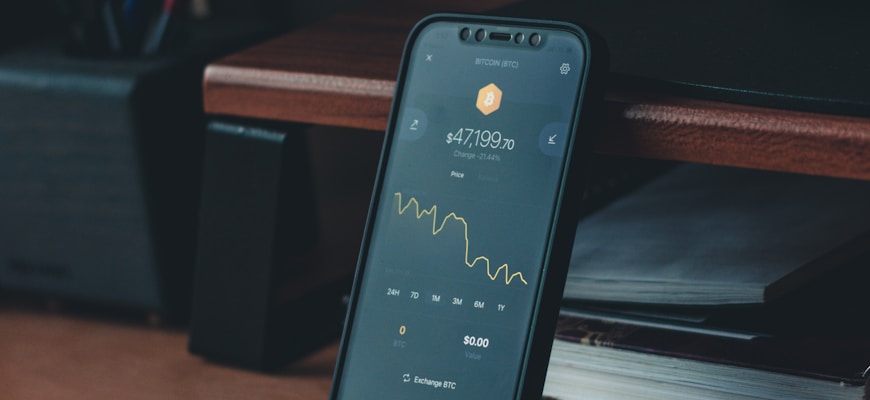Blockchain and the Internet of Things (IoT)

- Understanding the basics of Blockchain technology
- Exploring the potential of combining Blockchain and IoT
- Challenges and opportunities in integrating Blockchain with IoT
- Real-world applications of Blockchain in the Internet of Things
- Security implications of using Blockchain in IoT devices
- Future trends in the convergence of Blockchain and IoT
Understanding the basics of Blockchain technology
Understanding the basics of Blockchain technology is crucial when exploring its potential applications in the Internet of Things (IoT). Blockchain is essentially a decentralized, distributed ledger technology that securely records transactions across a network of computers. Each transaction is grouped into a block, which is then added to a chain of other blocks. This creates a tamper-proof record of all transactions that have occurred on the network.
One of the key features of Blockchain technology is its emphasis on security and transparency. The use of cryptographic algorithms ensures that once a block is added to the chain, it cannot be altered without the consensus of the network participants. This makes Blockchain an ideal solution for industries where data integrity and trust are paramount, such as finance, supply chain, and healthcare.
When it comes to the Internet of Things (IoT), Blockchain can play a vital role in enabling secure and efficient communication between devices. By leveraging Blockchain’s decentralized architecture, IoT devices can securely exchange data and execute transactions without the need for a central authority. This not only enhances the security of IoT networks but also enables new business models and use cases.
Exploring the potential of combining Blockchain and IoT
Blockchain and the Internet of Things (IoT) have the potential to revolutionize various industries by enhancing security, transparency, and efficiency. By combining Blockchain technology with IoT devices, a new level of trust and automation can be achieved. This symbiotic relationship allows for secure and decentralized data storage and transmission, reducing the risk of tampering or hacking.
One of the key benefits of integrating Blockchain with IoT is the improvement in data integrity. The immutable nature of Blockchain ensures that data from IoT devices remains unchanged and trustworthy. This is especially crucial in sectors such as healthcare, supply chain management, and smart cities, where data accuracy is paramount. By leveraging Blockchain, organizations can track the origin and journey of products, monitor patient health data securely, and optimize resource allocation in urban environments.
Moreover, the use of smart contracts in Blockchain-IoT integration can streamline processes and eliminate the need for intermediaries. Smart contracts are self-executing agreements that automatically enforce the terms of a contract when predefined conditions are met. This can reduce costs, increase efficiency, and accelerate transaction speeds in various IoT applications, such as automated payments for energy consumption, real-time asset tracking, and predictive maintenance in industrial settings.
Another advantage of combining Blockchain and IoT is the enhancement of cybersecurity measures. As IoT devices become more prevalent, they also become vulnerable to cyber attacks. Blockchain’s decentralized and encrypted structure can fortify IoT networks against unauthorized access and data breaches. This added layer of security can safeguard sensitive information, prevent data manipulation, and ensure compliance with regulations, especially in highly regulated industries like finance and healthcare.
In conclusion, the synergy between Blockchain and IoT holds immense promise for transforming industries and reshaping business models. By harnessing the power of decentralized ledgers, secure data transmission, and automated processes, organizations can unlock new opportunities for innovation and growth. As the technology continues to evolve, it is essential for businesses to explore the potential of combining Blockchain and IoT to stay ahead of the curve and capitalize on the benefits of this dynamic duo.
Challenges and opportunities in integrating Blockchain with IoT
One of the greatest challenges in integrating **Blockchain** with **IoT** is ensuring the security and privacy of data transmitted between devices. As **IoT** devices collect and transmit vast amounts of sensitive information, such as personal and financial data, it is crucial to implement robust security measures to prevent unauthorized access and data breaches.
Another challenge is the scalability of **Blockchain** technology to accommodate the increasing number of interconnected devices in the **IoT** ecosystem. **Blockchain** networks must be able to handle the large volume of transactions generated by **IoT** devices in real-time to ensure smooth and efficient operations.
On the other hand, the integration of **Blockchain** with **IoT** presents numerous opportunities for optimizing processes and creating new business models. By leveraging **Blockchain** technology, **IoT** devices can securely and transparently interact with each other without the need for intermediaries, reducing costs and improving efficiency.
Furthermore, **Blockchain** can enable the creation of decentralized **IoT** networks, where devices can autonomously exchange data and execute smart contracts without human intervention. This decentralized approach can enhance the reliability and trustworthiness of **IoT** networks, leading to increased adoption and innovation in various industries.
In conclusion, while there are challenges to overcome in integrating **Blockchain** with **IoT**, the potential benefits are vast. By addressing security and scalability issues and harnessing the opportunities for optimization and innovation, the combination of **Blockchain** and **IoT** has the potential to revolutionize the way devices interact and transact in the digital world.
Real-world applications of Blockchain in the Internet of Things
Blockchain technology has numerous real-world applications in the Internet of Things (IoT) ecosystem. One such application is in supply chain management, where blockchain can be used to create transparent and immutable records of the movement of goods from manufacturer to consumer. This helps in reducing fraud, ensuring product authenticity, and improving overall efficiency.
Another area where blockchain can be leveraged in IoT is in the field of smart contracts. Smart contracts are self-executing contracts with the terms of the agreement directly written into code. By using blockchain technology, these contracts can be securely stored and executed, leading to increased automation and trust in IoT transactions.
Furthermore, blockchain can enhance the security and privacy of IoT devices by providing a decentralized and tamper-proof ledger for storing sensitive data. This ensures that information exchanged between IoT devices remains secure and private, mitigating the risk of cyber attacks and data breaches.
Overall, the integration of blockchain technology with the Internet of Things has the potential to revolutionize various industries by improving transparency, efficiency, and security in IoT processes. As the adoption of IoT devices continues to grow, the need for secure and reliable solutions like blockchain will become increasingly vital in ensuring the success and sustainability of IoT ecosystems.
Security implications of using Blockchain in IoT devices
The integration of Blockchain technology in IoT devices brings a myriad of benefits, but it also raises security concerns that need to be carefully addressed. One of the main security implications of using Blockchain in IoT devices is the potential vulnerability of smart contracts. Smart contracts are self-executing contracts with the terms of the agreement between buyer and seller being directly written into lines of code. While smart contracts can streamline processes and increase efficiency, they are also susceptible to cyber attacks if not properly secured.
Another security concern is the issue of data privacy and confidentiality in IoT devices utilizing Blockchain technology. As more and more IoT devices are connected to the internet, the amount of sensitive data being generated and transmitted is increasing exponentially. If this data is not adequately protected, it can be intercepted or tampered with, leading to serious privacy breaches and security risks.
Furthermore, the decentralized nature of Blockchain poses a unique security challenge for IoT devices. While decentralization provides security benefits such as immutability and transparency, it also introduces new vulnerabilities that can be exploited by malicious actors. For example, a 51% attack on a Blockchain network could compromise the entire system, putting all connected IoT devices at risk.
Future trends in the convergence of Blockchain and IoT
The future of the convergence between Blockchain and IoT looks promising as these two technologies continue to evolve and complement each other. One of the key trends that we can expect to see is the increased use of smart contracts in IoT devices. These self-executing contracts can help automate transactions and processes in a secure and transparent manner.
Another trend to watch out for is the integration of Blockchain in supply chain management for IoT devices. By leveraging Blockchain technology, companies can track the movement of goods in real-time, enhance transparency, and improve the overall efficiency of their supply chain operations.
Furthermore, the combination of Blockchain and IoT can lead to enhanced security and privacy features for connected devices. With the decentralized nature of Blockchain, data stored on IoT devices can be secured from unauthorized access and tampering, ensuring the integrity of the information being transmitted.
Overall, the convergence of Blockchain and IoT is poised to revolutionize various industries, including healthcare, logistics, and smart cities. As these technologies continue to mature and innovate, we can expect to see a wide range of new applications and use cases that will drive the adoption of both Blockchain and IoT in the coming years.



